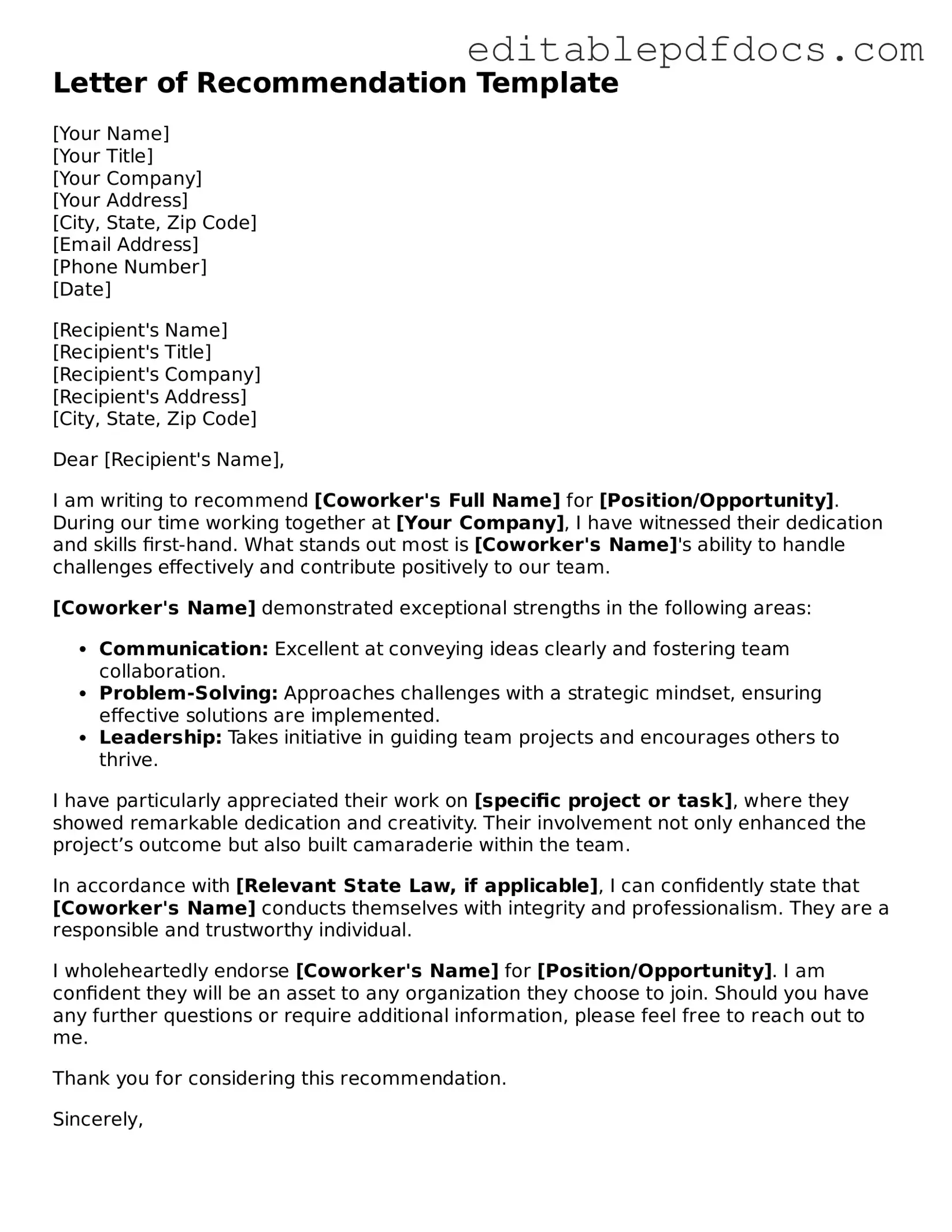When considering the professional growth of a coworker, a Letter of Recommendation can play a pivotal role in showcasing their skills, character, and contributions. This form serves as a structured way to present a positive endorsement, highlighting the individual's strengths and experiences in a clear and concise manner. It typically includes sections for the recommender to provide their relationship to the candidate, specific examples of the coworker's achievements, and an overall assessment of their capabilities. By utilizing this form, recommenders can ensure that they cover essential aspects such as work ethic, teamwork, and leadership qualities, which are crucial for potential employers or educational institutions. Moreover, it allows for a personalized touch, as each recommendation can be tailored to reflect the unique attributes of the individual being recommended. Ultimately, a well-crafted Letter of Recommendation can significantly enhance a coworker's prospects, making it an invaluable tool in their professional journey.
